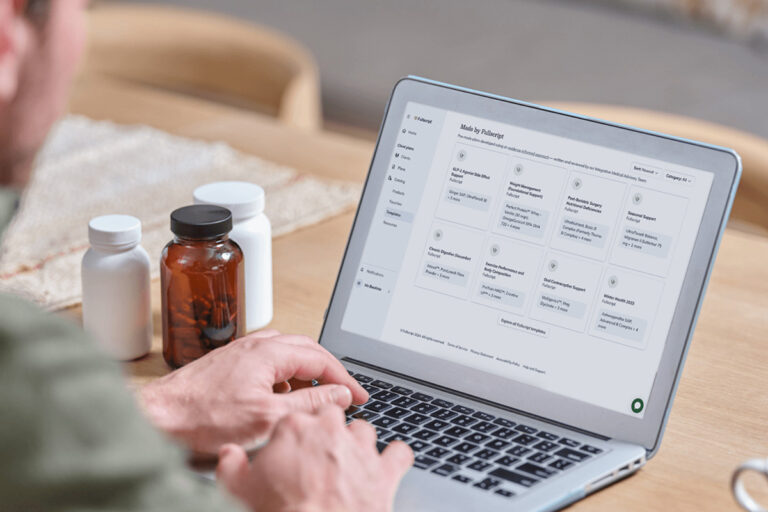There are several layers of complexity involved in understanding herb-drug interactions; however, the first step is to recognize that interactions are possible, and caution is required.
“Herb-drug interactions can be complex, which makes conclusive interactions challenging to ascertain,” says Richard Harris, MD, PharmD, who is a board-certified internal medicine physician and pharmacist. Dr. Harris explains that many factors can contribute to the complexity of this issue, including:
- Low, medium, or high concentrations of herbal active compounds can have different effects on the body.
- Manufacturing, dosages, contamination, and adulteration can all influence how the herb interacts with prescription drugs.
- Many herbal supplements can enhance or impede the body’s natural drug-metabolizing enzymes, such as CYP P045 and P-glycoprotein systems.
- The bioactive compounds present can vary based on the part of the plant (root, stem, leaves, fruits) that is used.
- Unlike medications, herbs often contain several bioactive compounds with different mechanisms of action.
Quality supplement plans in less than a minute
In addition to understanding the biochemistry of the herbs, clinicians can take other steps to help avoid herb-drug interactions in clinical practice.
“This complexity makes conclusive identification of interactions difficult,” Dr. Harris concludes. “That’s why it’s so important for clinicians to educate themselves on the biochemistry of these compounds to best prepare them to recommend herbal therapies to their patients.”

Understanding mechanisms of herb-drug interactions
There are basically two ways to look at herb-drug interactions, which can have both direct and indirect effects:
- Pharmacodynamics: the action of the drug on the organism
- Pharmacokinetics: the effect the organism has on the drug (3)
The most common manifestation of a herb-drug interaction is pharmacokinetically, which affects the drug’s blood concentration and activity. (1) These pharmacokinetic interactions can occur during absorption, distribution, metabolism, and excretion, where there is competition between the herb and the drug, which can change the drug’s concentration. (1) Like drug-drug interactions, the major underlying mechanism of herb-drug interactions occurs with the cytochrome (CYP) family of enzymes, which are necessary for the detoxification of foreign chemicals and the metabolism of drugs. (4)
Here are some herb-drug interaction examples:
- Garlic can impact the metabolism of saquinavir (HIV drug), which decreases plasma concentrations.
- Goldenseal can decrease metformin levels, impacting glucose control in people with type 2 diabetes. (7)
- Goldenseal has been shown to inhibit two major enzymes, CYP2D6 and CYP3A4, which are responsible for the metabolism of more than half of the currently used drugs. (1)
- Grapefruit juice influences absorption, which increases the bioavailability of calcium channel blockers and statins.
- Gymnema reduces carbohydrate absorption, which can influence insulin requirements.
- Kudzu can decrease the elimination of methotrexate.
- St. John’s wort impacts absorption, which can reduce plasma levels of drugs such as amitriptyline, digoxin, oral contraceptives, simvastatin, and warfarin. (3)
Clinicians can access several different online drug interaction checkers available including one through Medscape. (6)
Identifying herb-drug interactions
The study of herb-drug interactions is not an exact science and better guidelines and approaches are needed to help improve the prediction of potential issues. (3)
“Most evidence of herb-drug interactions is from in vivo research, case reports, and observational data,” explains Dr. Harris, who is the Chief Medical Officer of Nimbus Healthcare, a telemedicine company. “These data types are correlative but not causative and should be interpreted cautiously.”
Regarding case reports of herb-drug interactions, one scoring system showed that more than 68% of the cases were classified as invaluable as they did not contain enough information to assess the likelihood of an interaction. (5)
Clinical considerations
“Sometimes integrative practitioners try to use too many different herbal treatments without fully understanding the biochemistry of what they are using,” cautioned Dr. Harris. “Limiting the toolset of herbals to those that have randomized controlled data is one effective method.”
Also, be especially cautious when the patient is on a drug that has a narrow therapeutic window such as digoxin, lithium, and warfarin. (2) If the drug has a wide therapeutic window, the clinician can closely monitor the patient for adverse effects and to ensure the drug is working as it should. They can also consult with a clinical pharmacist for additional guidance. (1)
The bottom line
Despite the complicated nature of herb-drug interactions, this topic helps illustrate what integrative medicine is all about—the safe and effective blending of the best of conventional and complementary therapies.
Armed with a clear understanding of the biochemistry of herbal medicine, a thorough picture of the drug(s) the patient is taking, and a healthy dose of caution, the integrative practitioner can positively and safely achieve optimal clinical outcomes.
Quality supplement plans in less than a minute
- Ashner, G. N., & Hawke, R. L. (2017). Common herbal dietary supplement-drug interactions. Am Fam Physician, 96(2), 101-107. https://www.aafp.org/pubs/afp/issues/2017/0715/p101.html
- Blix, H. S., Viktil, K. K., Moger, T. A., & Reikvam, A. (2010). Drugs with narrow therapeutic index as indicators in the risk management of hospitalized patients. Pharmacy practice, 8(1), 50–55.
- Borse, S. P., Singh, D. P., & Nivsarkar, M. (2019). Understanding the relevance of herb-drug interaction studies with special focus on interplays: a prerequisite for integrative medicine. Porto biomedical journal, 4(2), e15.
- Fasinu, P. S., Bouic, P. J., & Rosenkranz, B. (2012). An overview of the evidence and mechanisms of herb-drug interactions. Frontiers in Pharmacology, 3, 69.
- Hussain M. S. (2011). Patient counseling about herbal-drug interactions. African journal of traditional, complementary, and alternative medicines : AJTCAM, 8(5 Suppl), 152–163.
- Medscape. (Accessed 2022, Sept). Drug interaction checker. https://reference.medscape.com/drug-interactionchecker
- Nguyen, J. T., Tian, D. D., Tanna, R. S., Hadi, D. L., Bansal, S., Calamia, J. C., Arian, C. M., Shireman, L. M., Molnár, B., Horváth, M., Kellogg, J. J., Layton, M. E., White, J. R., Cech, N. B., Boyce, R. D., Unadkat, J. D., Thummel, K. E., & Paine, M. F. (2021). Assessing Transporter-Mediated Natural Product-Drug Interactions Via In vitro-In Vivo Extrapolation: Clinical Evaluation With a Probe Cocktail. Clinical pharmacology and therapeutics, 109(5), 1342–1352.





